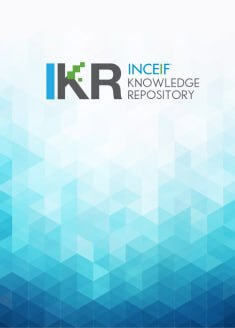
Browse by Author "Ibrahim Algahtani"
Results Per Page
Sort Options
- PublicationEstimation of long-run demand for money: an application of long-run structural modelling to Saudi ArabiaAbul Mansur Mohammed Masih; Ibrahim Algahtani (Istituto Economia Internazionale, 2008)
Using a portfolio balance approach, this paper makes an initial attempt to examine the importance of international factors, such as foreign interest rate and nominal effective exchange rate, on the stability of long-run money demand function in an open developing economy with free capital movement. Saudi Arabia is taken as a case study over the period (1986-2004). The method applied is the "Long Run Structural Modelling" (LRSM) (Pesaran and Shin, Econometric Reviews, 2002) which has tried to address the atheoretical nature of a lot of conventional cointegrating estimates. The stability of the functions has also been tested by CUSUM and CUSUMSQ. Our findings tend to suggest that the foreign interest rate and the nominal effective exchange rate (on top of the real income and domestic interest rate) have significant effects on the stability of the long-run money demand function of M3 and M2, respectively. The results are indicative of the significant effects of capital mobility and/or currency substitution in the broad money demand functions. A clear policy implication is that a failure to incorporate these two international factors in the money demand function may result in the function being unstable and the monetary policy being far less effective.
- PublicationPrice dynamics of crude oil and the regional ethylene marketsAbul Mansur Mohammed Masih; Ibrahim Algahtani; Lurion De Mello (Elsevier, 2010)
This paper is the first attempt to investigate: (i) is the crude oil (WTI) price significantly related to the regional ethylene prices in the Naphtha intensive ethylene markets of the Far East, North West Europe, and the Mediterranean? (ii) What drives the regional ethylene prices? The paper is motivated by the recent and growing debate on the lead-lag relationship between crude oil and ethylene prices. Our findings, based on the long-run structural modelling approach of Pesaran and Shin, and subject to the limitations of the study, tend to suggest: (i) crude oil (WTI) price is cointegrated with the regional ethylene prices (ii) our within sample error-correction model results tend to indicate that although the ethylene prices in North West Europe and the Mediterranean were weakly endogenous, the Far East ethylene price was weakly exogenous both in the short and long term. These results are consistent, during most of the period under review (2000.1–2006.4) with the surge in demand for ethylene throughout the Far East, particularly in China and South Korea. However, during the post-sample forecast period as evidenced in our variance decompositions analysis, the emergence of WTI as a leading player as well, is consistent with the recent surge in WTI price (fuelled mainly, among others, by the strong hedging activities in the WTI futures/options and refining tightness) reflecting the growing importance of input cost in determining the dynamic interactions of input and product prices.
Abstract View
2673757
View & Download
195649
